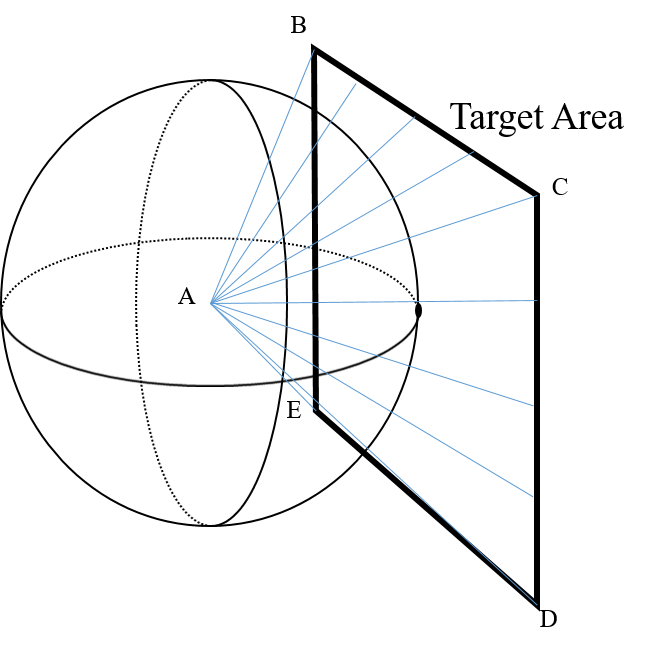Radioactive Target Practice
A radioactive source (which can be assumed to be a point source) is situated a distance of 1 metre from a large photographic plate (which can be assumed to be an infinite plane). There is a target area on the plate, a square of side 1 metre whose centre is the point on the plate which is closest to the source.
When a radioactive particle is emitted from the source, the direction in which it is emitted is totally random. This means that the probability that an emitted particle hits a particular region on the photographic plate is proportional to the solid angle subtended by that region of the plate at the source. A radioactive particle that is emitted from the source travels in a straight line: the effects of gravity and other forces may be ignored.
The probability that an emitted particle which hits the photographic plate hits the target area can be shown to be equal to where are positive integers, with distinct primes. What is the value of ?
The answer is 10.
This section requires Javascript.
You are seeing this because something didn't load right. We suggest you, (a) try
refreshing the page, (b) enabling javascript if it is disabled on your browser and,
finally, (c)
loading the
non-javascript version of this page
. We're sorry about the hassle.

Set up a coordinate axis system O x y z with the radioactive source at the origin and the photographic plate occupying the plane z = 1 . Introduce spherical polar angles θ , ϕ with respect to these axes, so that θ is the polar angle from the positive z -axis, and ϕ is the azimuthal angle measured from the x -axis.